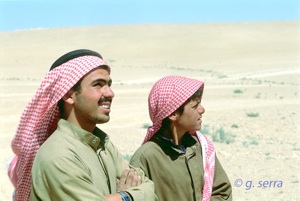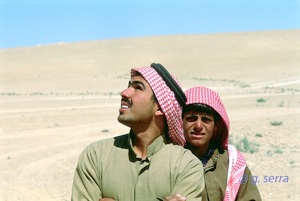COMMUNITY-BASED CONSERVATION:
CAPACITY BUILDING OF LOCAL COMMUNITY AND GOVT. STAFF 2000-03

COMMUNITY-BASED CONSERVATION:
CAPACITY BUILDING OF LOCAL COMMUNITY AND GOVT. STAFF 2000-03

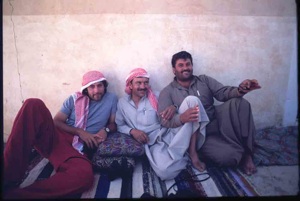
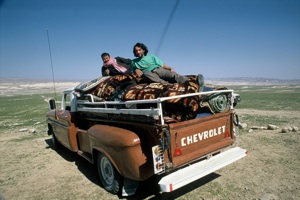
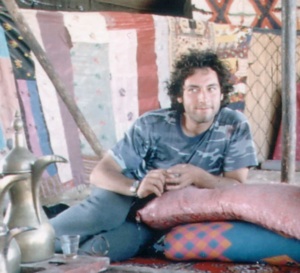

While enthusiastically leading the long-term fauna survey, day by day, Serra was able to build the naturalistic, ecological & conservation capacity, awareness and passion of few selected local people (Govt. staff, Palmyra hunters and indigenous pastoralists). By “infecting” them with the “germ of the passion for nature”, the ecological awareness and naturalistic appreciation of these people flourished significantly: slowly they started to realize that they were becoming the first Syrian trained and certified conservationists and eco-guides - and that also the responsibility on their shoulders was growing…
A total of 7-10 indigenous and local people were involved in the conservation field work, with the aim of in-service train them as birdwatching and eco-guides and conservationists, and also to teach them the English language. Gradually, they have become highly motivated and skilled in bird field identification and fluent in English. One of them, among the most authoritative hunters of Palmyra, was converted into a passionate birdwatching guide and a fervent anti-hunting campaigner nationally. This work experience with local community was defined “an example of good practice in conservation” by the Dana Declaration Standing Committee and the World Alliance of Mobile Indigenous Peoples (WAMIP).
Two below listed documentaries cover the topic:
BBC World’s Earth Report Series. 2004. “The son of the Schyte” (25 min video)
RAI 3, TGR Mediterraneo. 2004. “Un italiano a Palmyra” (5-min video)
FAO publication titled “From Indifference to Awareness” (Serra et al. 2003 b) documents the raising of the ecological awareness among the local community.
Despite the FAO/DGCS project termination in spring 2004, Serra personally and voluntarily kept the commitment of trying to help the local people in setting up a small-scale birdwatching and eco-tourism cooperative in Palmyra, through raising funds, creating a dedicated web page and also by directly and continuously putting them in contact with foreign eco-tourists and birdwatchers. The dream of the eco-guiding cooperative did not work out (due to arising of internal and personal conflicts), but since 2005 two of these people, Ahmed Khaled Abdallah (from the Beni Khaled tribe), and Adeeb Assaed (the ex Palmyra hunter) have finally started to earn a living out of guiding eco-tourists and birdwatchers in the desert. While Mahmdud Scheisch Abdallah and Ghazy al Qaim have become the first Syrian trained and certified protected area rangers from the Syrian Govt.: they are nowadays veterans of the yearly implementation of the ibis protection program.
These pioneers from Palmyra are most probably the first people in Syria making a living out from nature conservation: they have shown, and they are showing every day to all the other desert dwellers, that not only hunting wildlife is profitable but also protecting and appreciating it can be profitable as well (a quite innovative idea locally!): the main difference being that the first practice is unsustainable in the short and medium term (wildlife in the Syrian desert has been already extensively extirpated) while the second practice is sustainable and helps the desert ecosystem being alive in the benefit of present and future generations. The fact is that the livelihood of most of the people living in the Syrian desert is still predominantly based on its natural resources and ecological services (e.g. pastures for livestock, shrubs for firewood, water for irrigation and drinking etc.).
The indigenous local community living at the NBI breeding grounds in Syria live on a subsistence economy and their livelihoods depend on the unsustainable over-exploitation of natural resources due to a complex array of reasons independent from their will.
Ibis Protected Area and the indigenous local community living within it (mainly from Amur tribe) hold a good potential for promoting the revitalization of the traditional customary pasture management system known as hema system. Once (and if/when) secured the survival of this globally valuable and unique piece of Middle Eastern biodiversity, responsible ecotourism in the Palmyra area could become a mean to promote sustainable development and raise much needed ecological awareness locally.
Potential for ecotourism in the Palmyra desert has been thoroughly assessed (Serra 2007, Serra 2008). But a fundamental prerequisite for prompting responsible ecotourism appears to be still missing in Syria: the sound protection and management of key biodiversity and landscape heritage sites (starting from Al Talila and Ibis Protected Area!).
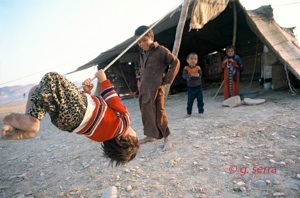
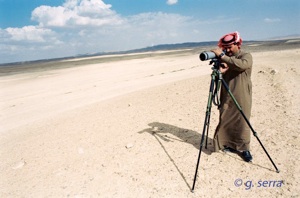
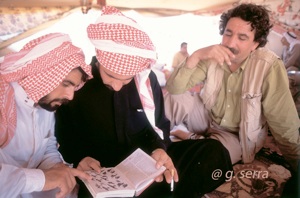
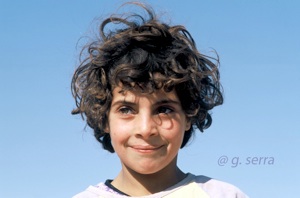
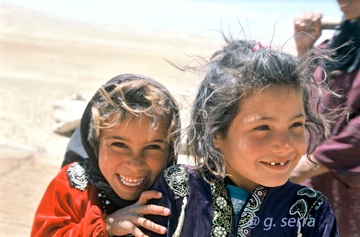
@ g. serra
